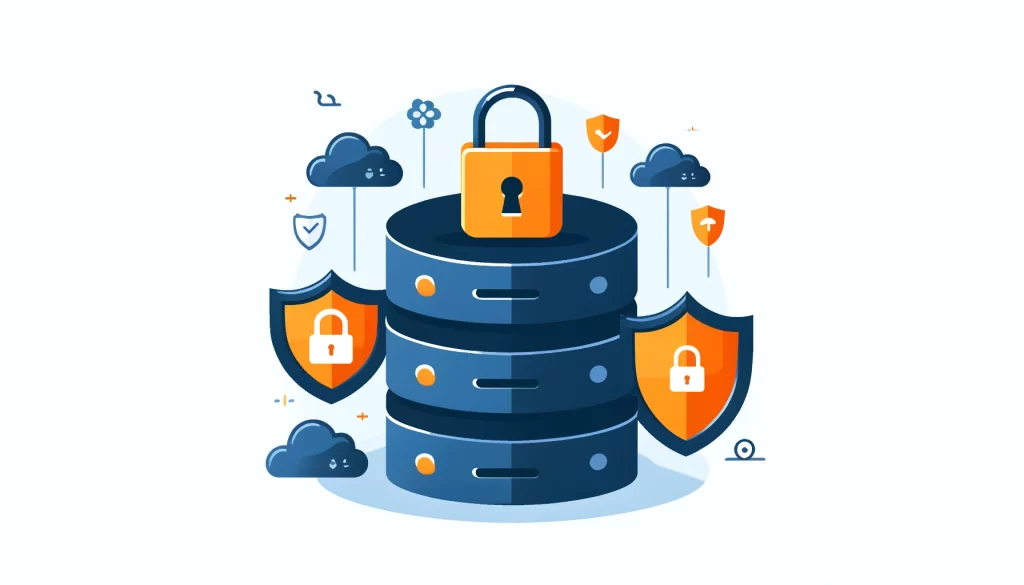
Best Database Security Practices

As the reliance on databases continues to grow, it becomes increasingly important to prioritize database security practices.
Not having proper security measures can result in serious problems like data breaches, financial losses, and damage to reputation.
This article will discuss important database security practices that all organizations should use to protect their data.
Deep Look into Database Security Practices
Database security involves a set of practices and technologies designed to protect database management systems from unauthorized access, malicious attacks, and data breaches.
It encompasses multiple aspects of information security, including application security, data security, and endpoint security.
Database security is about keeping data safe in a database. This involves ensuring that we keep the data private, accurate, and accessible. It also involves protecting the database system and any applications that use it.
Separating Database and Web Servers
One fundamental security practice is to separate your database server from your web server.
By maintaining isolation between these two components, you can significantly reduce the risk of a successful attack.
If an attacker manages to compromise your web server, they will not have direct access to your database.
The separation adds an extra layer of defense. It stops side-to-side movement. This reduces the damage an attacker can do.
Encrypting Data at Rest and in Transit
Encryption is a critical aspect of database security. Encrypting database connections with TLS is crucial to safeguard data as it moves through networks.
You should encrypt any disks containing data to prevent unauthorized access in case of theft or physical compromise. For sensitive data fields, consider implementing column-level encryption to ensure their privacy.
A healthcare organization stores patient records in a database. By securing the database connections and the disks with encryption, they can keep patient information safe and follow rules like HIPAA.
Implementing Strong Authentication Measures
Strong authentication is crucial for preventing unauthorized access to your database.
Two-factor authentication (2FA) makes logging in more secure. Users must provide a second form of identification along with their password. This extra step adds a layer of protection to their accounts.
helps verify the user’s identity and protect their account from unauthorized access. One example of a second form of identification could be a code sent to the user’s phone.
Another option is a fingerprint scan. Alternatively, the user may be asked to answer a security question. By using 2FA, companies can better secure their systems and safeguard sensitive information.
This can include a security token, a mobile phone, or a biometric factor such as a fingerprint. By implementing 2FA, you can significantly reduce the risk of unauthorized access, even if a user’s password is compromised.
A financial institution requires employees to use 2FA when accessing sensitive customer data stored in a database. This ensures that only authorized personnel can view and modify the data, minimizing the risk of a data breach.
Discovering Sensitive Data
To effectively protect sensitive data, you need to know where it resides within your database.
Auditing your data and identifying sensitive tables or columns is crucial for applying appropriate security measures.
Failing to protect sensitive data can lead to breaking rules. This can make it easier for data to be stolen.
An e-commerce company regularly scans databases to identify columns containing personally identifiable information such as credit card numbers and addresses.
By doing so, they can apply additional security controls to those specific columns, ensuring compliance with PCI DSS standards.
Separating Test and Production Environments
Common thing for organizations is to have separate environments for testing and production.
However, using real production data in test environments can introduce significant security risks.
To reduce these risks, make sure that test environments are kept separate from production environments and have different roles and permissions.
Instead of using actual production data, create synthetic or anonymized datasets for testing purposes.
To prevent bugs or security weaknesses, establish a strict process for moving databases from testing to production.
A software development company maintains separate test and production environments for their database.
Developers work with anonymized data in the test environment, ensuring that no sensitive information is exposed.
Before deploying any changes to the production database, the team conducts a thorough security review to identify and address potential vulnerabilities.
Revoking Privileges
Adhering to the principle of least privilege is essential for maintaining database security.
Users should only have access to the specific resources and permissions required to perform their job functions.
Regularly review and revoke privileges that are no longer necessary. Implementing a Privileged Access Management (PAM) system automates the process of granting and revoking privileges. This helps reduce the risk of privilege creep.
A marketing agency uses a PAM system to manage access to their customer database.
When an employee changes roles or leaves the company, their access privileges are revoked. This ensures they no longer have access to sensitive data.
Monitoring Database Activity
Continuous monitoring of database activity is crucial for detecting and responding to potential security incidents.
Regularly review login attempts, both successful and unsuccessful, to identify any suspicious activity.
Create an alerting system that notifies relevant individuals or teams when it detects anomalous behavior.
Database activity monitoring (DAM) solutions can provide independent monitoring and help track administrative actions.
A TV provider company uses a DAM solution to monitor their customer database.
The system sends alerts right away when it finds unauthorized access attempts or suspicious queries. This helps the security team to investigate and respond quickly.
Conducting Regular Security Tests
To ensure the effectiveness of your database security measures, regular testing is essential.
Conduct vulnerability assessments and penetration testing to identify weaknesses in your database security posture.
These tests find where attackers could get in and help you fix any weaknesses before hackers use them.
A government agency hires a team of ethical hackers to conduct a penetration test on their database.
The hackers simulate real-world attack scenarios to identify weaknesses and provide recommendations for improving the agency’s database security.
Conclusion to Database Security Practices
Database security is a critical aspect of protecting sensitive information and maintaining the trust of customers and stakeholders.
Organizations can significantly reduce the risk of data breaches by implementing essential security practices. Separating database and web servers is one such practice.
Encrypting data and using strong login methods are also crucial.
Discovering sensitive data helps organizations identify and protect valuable information. Separating test and production environments prevents the exposure of sensitive data during testing.
Regularly revoking unnecessary privileges minimizes the risk of unauthorized access. Monitoring database activity allows for prompt detection and response to potential security incidents.
Conducting regular security tests helps identify and address weaknesses before their exploitation.
Important to remember that database security is an ongoing process that requires continuous effort and vigilance.
As the threat landscape evolves and new vulnerabilities emerge, organizations must remain proactive in their approach to database security.
Organizations can safeguard their databases by focusing on security practices. Staying up-to-date with industry best practices is also crucial. These measures help protect the sensitive information entrusted to them.
